2016 Hyundai Veloster Rental Review

Did you ever have to find a way to survive and you knew your choices were bad, but you had to survive?
Irving Rosenfeld, “American Hustle“
The rental car lottery is a funny thing. Some days you win; other days you end up having your olfactory receptors assaulted by an invisible army of plastic-forming chemical fumes.
Faced with choosing between a Dodge Dart, Chrysler 200, Toyota Corolla and Hyundai Veloster this past Monday, I called our fearless leader: “Which one of these things do we need a review of?”
After Mark did a quick perusal of the site’s history, we agreed that, since our last Veloster review was over four years old, I would grab the keys to the visually, erm, interesting Hyundai.
It’s a decision I’ve been regretting ever since.
My first leg with the Veloster was a two-hour drive along I-96 from Detroit to Grand Rapids, a stretch of road that nobody will ever mistake for the Tail of the Dragon. Compounding the joy of this highway drive was a particularly nasty winter storm, spitting freezing rain and snow in alternating, Wagnerian symphonic movements. The big rigs of the Michigan highways plowed through the precipitation with nary a care, followed closely by the ubiquitous GM Family First Plan-purchased Tahoes and Suburbans, all of them more than happy to spit their slushy wake directly in my path.
The Veloster — which is, for all intents and purposes, a fatter Accent — rebelled against my every input. The 132 horsepower, 1.6-liter engine mated to a six speed dual-clutch transmission refused to do anything to help move the car’s considerable weight out of the way of my fellow travelers. That DCT comes with what might be the most useless set of paddle shifters in the history of mankind; so well hidden behind the steering wheel that even Hyundai doesn’t want you to know they exist. I don’t blame them, because the damn paddles don’t make a lick of difference. Like Selena Gomez’s heart, the DCT wants what it wants, and your desired gear selection is just not that important.
I don’t have the instrumented tests to back this up, but the Veloster might be the slowest car from 50 to 70 mph that I’ve ever driven. You simply can not do in the Veloster what you’re used to doing in other cars — like, I don’t know, passing — because neither the power nor the necessary responsiveness are present.
Fortunately, you also can’t see out of it.
This is what it looks like when you turn your head to look through the rear window. Don’t bother using the rearview mirror; it’s completely useless. The passenger-side mirror literally could not be placed in a safe driving position. In its most extreme setting, the bulbous rear fenders of the Veloster take up approximately half of the mirror when viewed by a 5-foot-9-inch man. I found that the safest thing to do was to simply plot my course in the right-hand lane, set the cruise to 70, and let all those Tahoes roll on by.
Upon arriving in Grand Rapids, I found myself in the middle of a rather more pleasant snowstorm with large, soft flakes covering the ground. The snow was fresh enough that most of it laid undisturbed, yet it was falling quickly enough to have covered nearly every surface completely. It reminded me of the days of my youth when, as a baby-faced 12 year old, I sat giggling in the passenger seat of my older brother’s Volkswagen Fox as he performed e-brake donuts in the parking lots of Dublin, Ohio.
What the hell — I said to myself — might as well have some fun in this thing.
I turned off the Veloster’s traction control, headed over to the parking lot behind the boarded-up Mexican restaurant on 28th Street, and proceeded to make some snow art with the Veloster. I was reminded of just how much fun a low horsepower, front-wheel-drive car can be when combined with a little bit of reckless behavior. In fact, had I taken the Veloster directly to the rental car counter at GRR airport and dropped it off, we might have parted ways as friends. Alas, I still had to keep the damn thing for the rest of the week.
The ride quality of the Veloster can best be described as absent. I might have suspected there was something broken in the suspension if it weren’t a brand new car. It turned like its front struts were disconnected, communicating absolutely zero feedback to the driver. And the combined sound of the motor and the tires resembled mechanical hamster intercourse.
The interior of Hyundai’s little hatchback is the prototypical Strobelight Honey — it’s quite appealing until you look closely. Every surface is hard enough to cause bruising. The steering wheel is downright unpleasant to grasp. The seats provide little to no support to the driver, even if they do have some stylish stitching in them to remind you it is, in fact, a Veloster, and not an Accent.
The back seat is small enough to be essentially useless in practical applications. Nobody except small children will be comfortable in the rear of the cabin for any length of time, and even they might complain. I get that the Veloster is kind of quirky and interesting with its third door on the passenger side and no rear door on the driver’s side, but I’d say the function is overwhelmed by the form. Put another door on this thing, or get rid of the third one.
The stereo system in the base Veloster just flat out sucks, and its “bass boost mode” only makes it worse. However, the 7-inch touchscreen is a highlight, and the system is easy to use and navigate. Also, there’s a fun little fuel economy game that you can play should you find yourself sufficiently bored, which — let’s face it — you will be.
In typical Hyundai/Kia fashion, Bluetooth and XM Radio are standard, as well as a USB charging port, but floor mats are only available as an option. My rental had less than a thousand miles when I picked it up. After a week of winter weather, the floors resembled the Bonneville Salt Flats.
Can we get some floormats up in here? This is just gross. Come on, Hyundai.
The one place that the Veloster did not disappoint was in storage space. The hatch opens up to reveal considerably more room than in my Fiesta ST, and more than in any other comparable car. It easily swallowed my 26-inch suitcase and laptop bag without complaint. Rear seats can be folded nearly flat for even more room, if needed.
But let’s be honest. The real reason why anybody buys a Veloster is because it looks like a cool, younger person’s car. It’s not intended to be driven by cranky men in their late 30s. It’s intended to be purchased by kids in their early-to-mid 20s, maybe even as their first new car ever. In that sense, it reminds me of another Hyundai, and one your humble reviewer used to own: the Tiburon.
The second-generation Tiburon was similar to the Veloster in many of ways — sporty looks, not-so-sporty interior — and 22-year-old Bark thought it was cool enough to buy a manual transmission example in black. It was slightly more powerful than this Veloster, and maybe a hair quicker, but the overall intent was the same. So, perhaps I’m being a bit harsh on this modern-day version of Hyundai’s shark-inspired coupe. But, I’m probably not.
My rental Veloster, even without floor mats, specs out at $19,935. I am guessing Hyundai does it that way so it can advertise the quirky compact as being under $20,000, because every single Veloster within 500 miles of me had the mats as an option, driving the sticker price up to $20,050. The car that I think makes the most sense to cross-shop against the Veloster, the Scion tC, clocks in at $21,155, and that’s not taking into account the excellent chance you’ll be able to buy a Veloster at a discount as opposed to Scion’s one-price strategy for the tC. However, the tC has an honest-to-God real motor; even if the tC isn’t a real sporting coupe, at least it looks like one.
The Bark recommendation: if the looks of the Veloster appeal to you (and that’s frankly the only reason to consider buying one), you should pony up the additional cash for the R-Spec edition that includes a turbocharged version of the 1.6-liter engine with 201 horsepower, a better suspension, Torque Vectoring Control and a real stereo system, all for about $22,435. However, at that price point, you’re getting into Fiesta ST territory, and the Veloster wants no part of the FiST when it comes to driving dynamics.
Simply put, the base Veloster is in no way, shape, or form a good car. I’m not only glad to give it back, I’m downright eager.

More by Mark "Bark M." Baruth
Latest Car Reviews
Read moreLatest Product Reviews
Read moreRecent Comments
- Groza George I don’t care about GM’s anything. They have not had anything of interest or of reasonable quality in a generation and now solely stay on business to provide UAW retirement while they slowly move production to Mexico.
- Arthur Dailey We have a lease coming due in October and no intention of buying the vehicle when the lease is up.Trying to decide on a replacement vehicle our preferences are the Maverick, Subaru Forester and Mazda CX-5 or CX-30.Unfortunately both the Maverick and Subaru are thin on the ground. Would prefer a Maverick with the hybrid, but the wife has 2 'must haves' those being heated seats and blind spot monitoring. That requires a factory order on the Maverick bringing Canadian price in the mid $40k range, and a delivery time of TBD. For the Subaru it looks like we would have to go up 2 trim levels to get those and that also puts it into the mid $40k range.Therefore are contemplating take another 2 or 3 year lease. Hoping that vehicle supply and prices stabilize and purchasing a hybrid or electric when that lease expires. By then we will both be retired, so that vehicle could be a 'forever car'. And an increased 'carbon tax' just kicked in this week in most of Canada. Prices are currently $1.72 per litre. Which according to my rough calculations is approximately $5.00 per gallon in US currency.Any recommendations would be welcomed.
- Eric Wait! They're moving? Mexico??!!
- GrumpyOldMan All modern road vehicles have tachometers in RPM X 1000. I've often wondered if that is a nanny-state regulation to prevent drivers from confusing it with the speedometer. If so, the Ford retro gauges would appear to be illegal.
- Theflyersfan Matthew...read my mind. Those old Probe digital gauges were the best 80s digital gauges out there! (Maybe the first C4 Corvettes would match it...and then the strange Subaru XT ones - OK, the 80s had some interesting digital clusters!) I understand the "why simulate real gauges instead of installing real ones?" argument and it makes sense. On the other hand, with the total onslaught of driver's aid and information now, these screens make sense as all of that info isn't crammed into a small digital cluster between the speedo and tach. If only automakers found a way to get over the fallen over Monolith stuck on the dash design motif. Ultra low effort there guys. And I would have loved to have seen a retro-Mustang, especially Fox body, have an engine that could rev out to 8,000 rpms! You'd likely be picking out metal fragments from pretty much everywhere all weekend long.



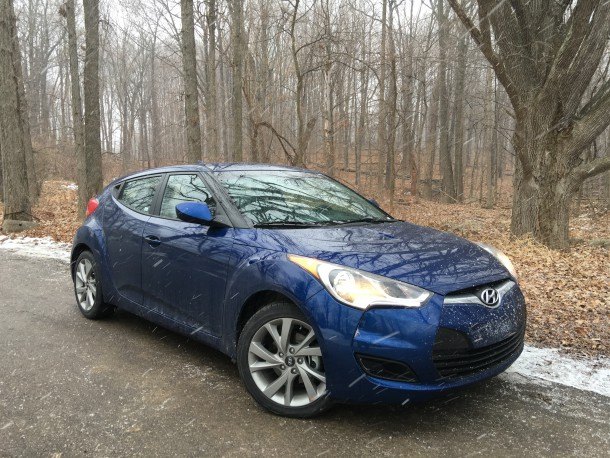
































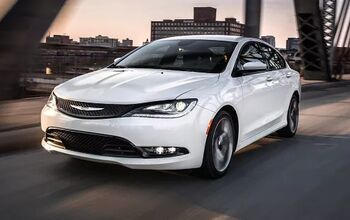
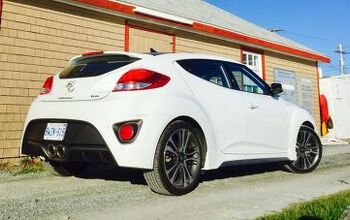
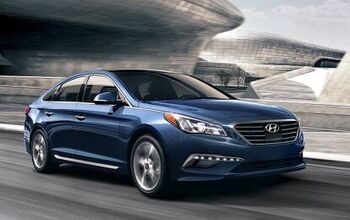

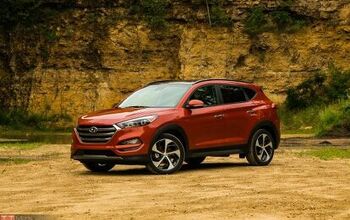










Comments
Join the conversation
As as 2013 Veloster owner, I can't say I disagree with anything in the review. I have the gutless NA version with a stick shift, and it is what it is. Good gas mileage, great electronic features, crappy rear visibility, and hard plastics everywhere. But, I also think that it's honest. I got it new, out the door, with upgraded seats and sound system for way under $20,000, and it hasn't caused a problem for me yet. It's a commuter car for someone who doesn't want to admit they need a commuter. I have a hilly commute, and I spend a lot of time in third trying to maintain 65 mph, but I knew that from the outset.
A perfect example of function following form. The Elantra is 100 times better car.